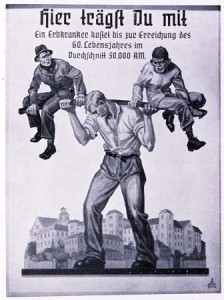Zygmunt Baumans’ article provides the reader a look at the sociological aspect of modernity and the holocaust. In his article, Bauman mixes “modernity” and ‘sociological behavior” together while using the Holocaust to look at human behavior. Bauman argues that the Holocaust is another chapter in modern society. Like many events that preceded the Holocaust, violence, in Bauman’s mind, was a “constitutive feature of Modern Civilization” and that the “Holocaust-style phenomena must be recognized as legitimate outcome of civilizing tendency.” (Bauman Pg 28) He thinks that because of how humans interact with one another, how each individual thinks differently, and how each individual solves problems differently, humanity will always be doomed to use violence from time to time to solve its problems. For example, he believed that the Holocaust had a feeling of familiarity from its past. He uses the “slaughter of Albigensian heretics” and “the British invention of concentration camps during the Boer War” as examples of how the Holocaust took a familiar path from other events in history.
Bauman provides his audience with a valid argument in that the Holocaust became another example of how human behavior tends to lead toward violence from time to time. As society has and will continue to advance, humans will continue to fight over various issues. Over the course of time, Humanity has seen violence over Religion, imperialism, politics, and present day terrorism. In the 20th and 21st centuries, humans continue to fight over natural resources and politics. These conflicts over natural resources and politics have led to two global conflicts and many more small scaled wars. Whatever the reason may be, the fact that violence continues today makes a strong case for Baumans argument that humans will continue to fight and the Holocaust was another chapter in modern societies.
Bauman used the term “Modernity” to describe the social beliefs humans have and will have toward the world. He used it in a way that helped him explain how the legacy of the Holocaust became another example of human tendencies toward violence, like predeceasing conflicts before it.

